Project Examples
FINDING OF NO ADVERSE EFFECT (COMPLEX)
This example focuses on a historic bridge rehabilitation project where some historic fabric was replaced in-kind and character-defining features of the bridge were extensively rehabilitated following Federal historic preservation standards. It explores the considerations behind the choice to rehabilitate the bridge following the Secretary of the Interior’s Standards. This supported design and construction-related decisions that enabled FHWA to reach a finding of No Adverse Effect.
Overview
Increased traffic over a historic through truss bridge built in 1942 led the State DOT to explore options to address safety, capacity, and the need for a structurally sound bridge. The goal was to meet current and future transportation needs within the design life of the bridge, while maintaining traffic to the maximum extent possible during construction. This example focuses on design and consultation efforts to avoid or minimize potential adverse effects to the historic bridge. The FHWA consulted with the SHPO on the definition of the APE and survey results, and the SHPO agreed with both the APE and survey findings. Tribes were consulted and had no concerns. Effects to historic properties other than the bridge were avoided.
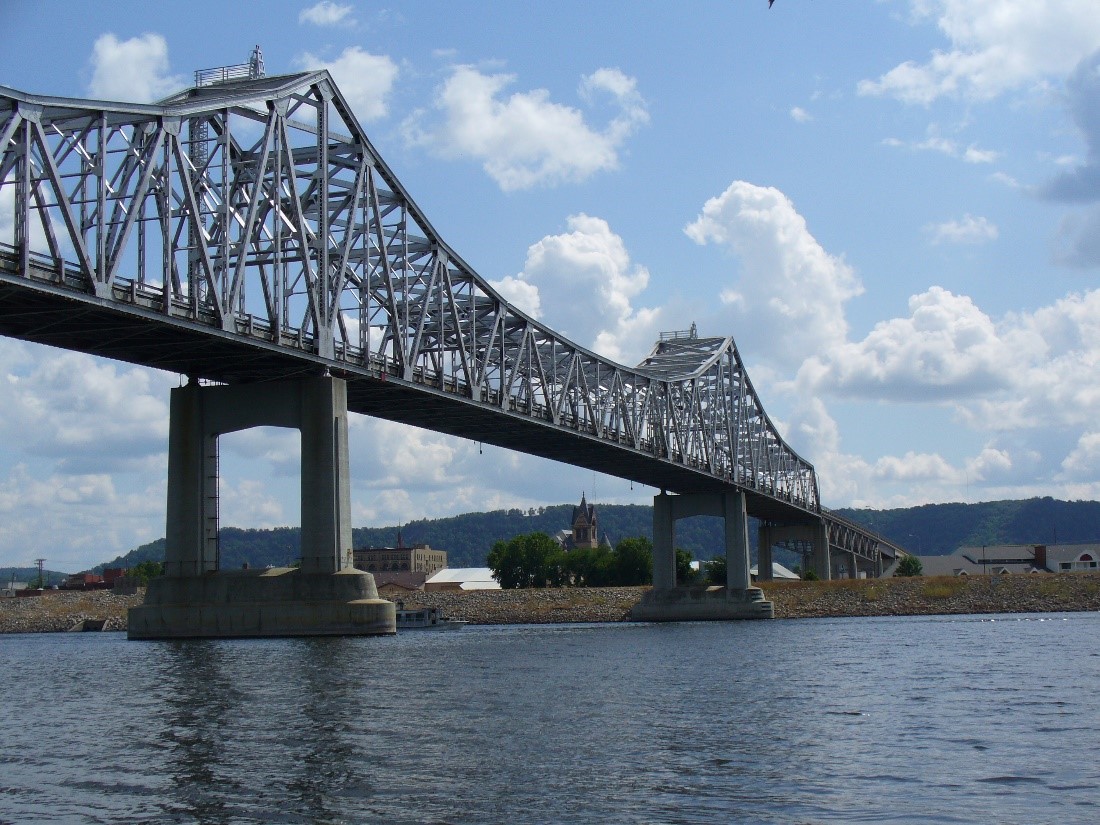
View of historic through truss bridge with deck truss approach spans prior to rehabilitation. Photograph courtesy of the Minnesota Department of Transportation.
The three-span, steel, riveted cantilever through-truss with deck truss approach spans had been previously determined eligible under Criterion C in terms of its engineering as the state’s only surviving example of its property type and for its significant engineering that enabled a span over a major waterway. The main through-truss span is the significant character-defining feature of the bridge. The approach deck truss spans were determined to be more common examples of this type of bridge; however, the deck truss spans were still considered to be historic fabric and are part of the National Register-eligible bridge.
Through discussions with the State DOT project team, it was clear that some project alternatives would result in an adverse effect to the historic bridge. Based on proposed activities, applicable examples of adverse effects, as defined in 36 CFR Part 800.5, were the following:
- (ii) Alteration of a property, including restoration, rehabilitation, repair, maintenance, stabilization, hazardous material remediation, and provision of handicapped access, that is not consistent with the Secretary’s Standards for the treatment of Historic Properties.
- (iv) Change of the character of the property’s use or of physical features within the property’s setting that contribute to its historic significance.
The FHWA and the State DOT worked with consulting parties with interest in the historic bridge to identify ways to avoid these potential adverse effects.
Issues Considered
- Several project alternatives were considered, including full replacement of the historic bridge that would have had an adverse effect since this alternative would require its demolition.
- Through consultation, a preferred alternative emerged to construct a parallel bridge and rehabilitate the existing historic bridge for use as a one-way pair. Construction of the paired bridge was possible since it avoided effects to other historic properties within the project’s APE. This alternative emerged through extensive consultation among the DOT bridge engineers, project engineers, consulting historians with expertise in historic bridges, SHPO and other interested parties.
- Due to its historic status, rehabilitation activities were designed to follow the Secretary of the Interior’s Standards for the Treatment of Historic Properties (Secretary’s Standards) to result in a no adverse effect finding.
- The design posed a big challenge because the truss members required strengthening while retaining historic materials. The solution was to retrofit existing members by stringing strengthening rods through the primary truss members, which retained this significant feature of the through truss main span and did not detract from the historic character of the bridge.
- The deck truss approach spans required replacement of significant portions of the original materials. Rather than using a non-truss span-type, the approach spans were replaced in-kind since they are a component of the historic bridge and considered historic fabric.
- Since the new parallel structure is close to the historic bridge, its design was chosen to provide a clear differentiation from the original structure and avoid recreating or replicating it in order to avoid creating a false sense of history. The parallel bridge was designed not to detract from the design and associative characteristics that qualify the historic bridge for listing in the National Register.
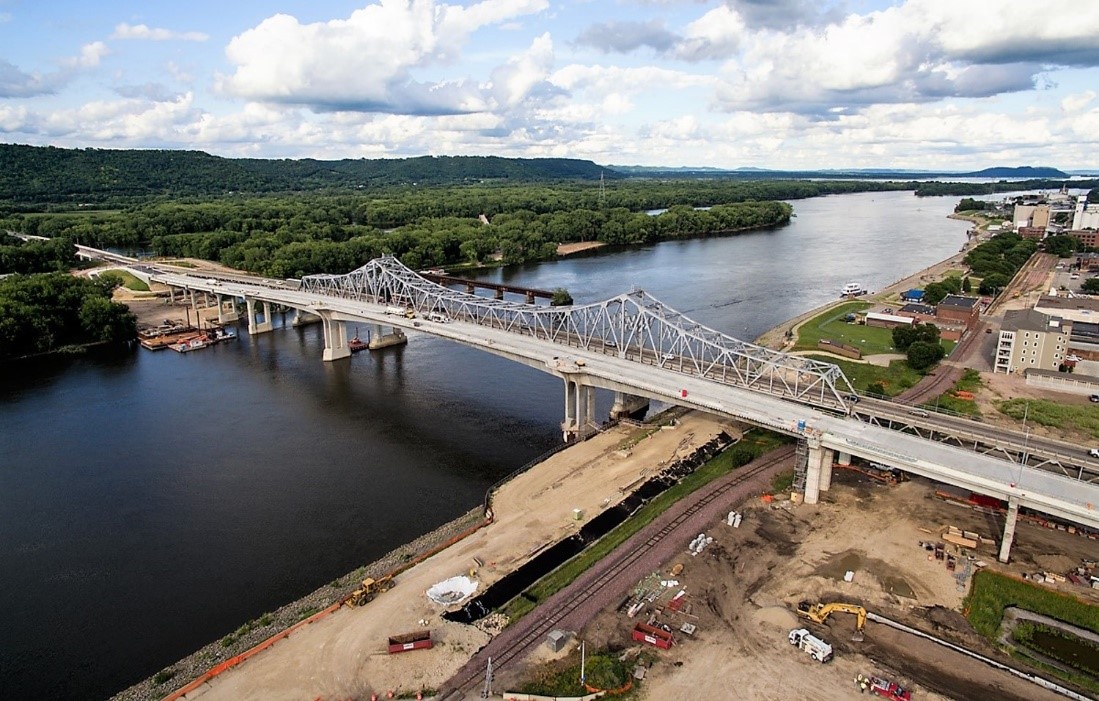
Rehabilitated bridge with new parallel structure. Photograph courtesy of the Minnesota Department of Transportation.
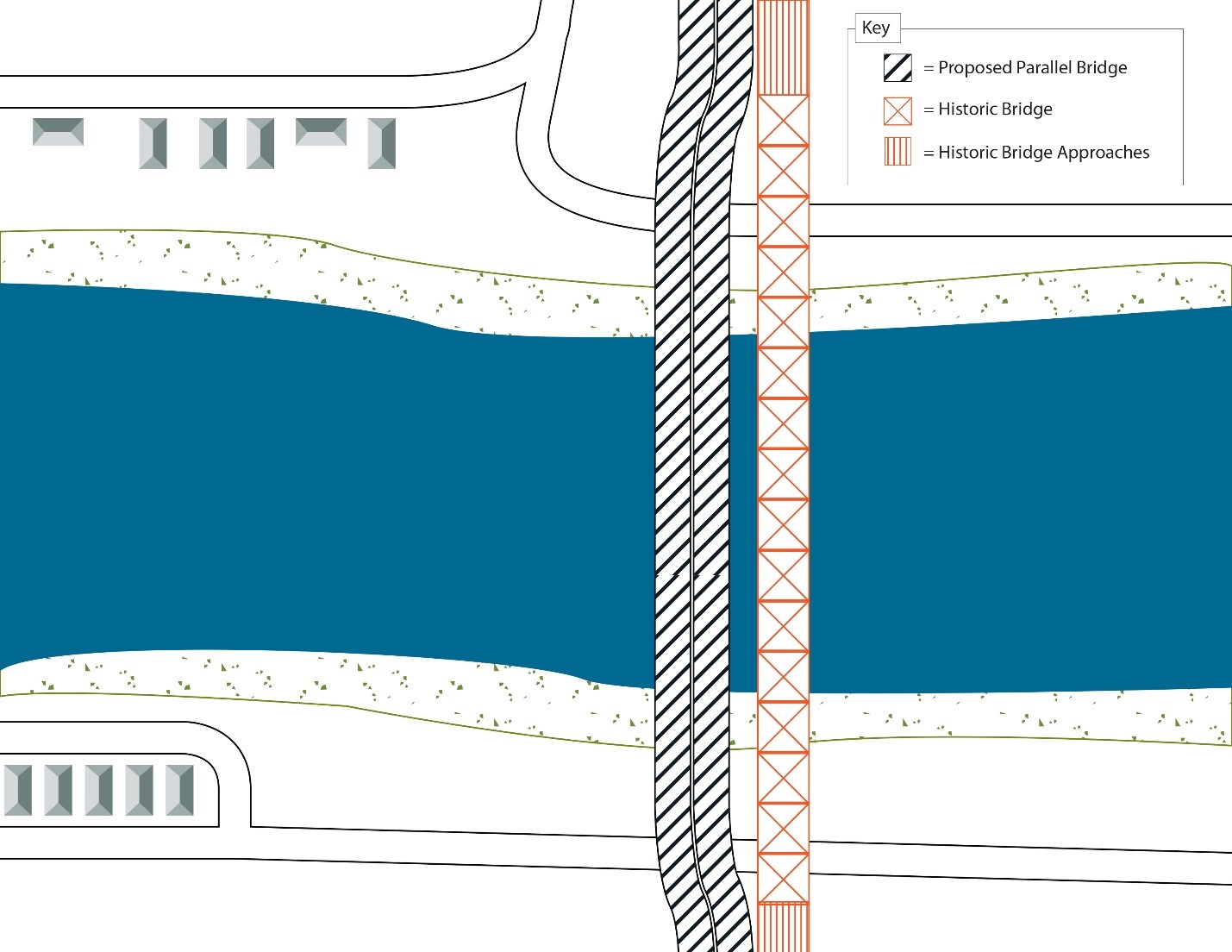
Illustration showing the spatial relationship between existing historic bridge and proposed new bridge and approaches.
- The physical distance between the two bridges and the height of the new bridge were important considerations that accounted for viewsheds toward the historic bridge from the roadway and water.
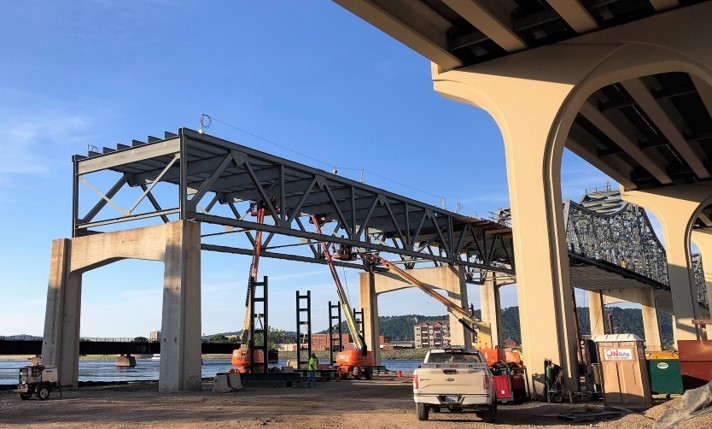
View of deck truss approach spans being replaced in-kind and new parallel structure shown at right. Photograph courtesy of the Minnesota Department of Transportation.
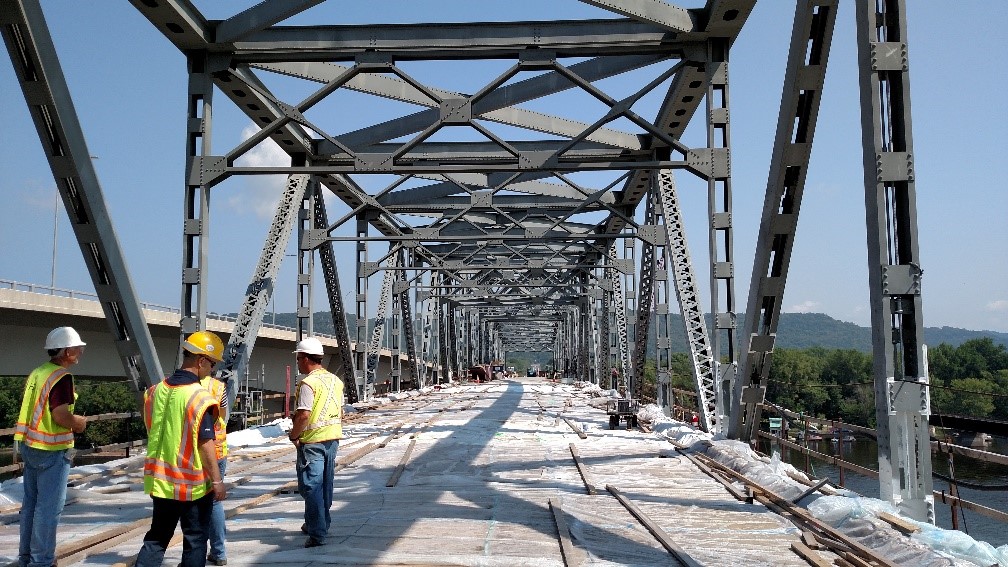
Rehabilitation of historic bridge underway. Strengthening rods shown at left inside the truss member. Photograph courtesy of the Minnesota Department of Transportation.
Effects Analysis
An adverse effect was avoided through consultation resulting in selection of a design alternative to rehabilitate the bridge following the Secretary of the Interior’s Standards. Through implementation of this alternative, the character of the historic bridge was retained. The three, steel, cantilevered, through-truss spans across the river received extensive steel repairs consistent with the Secretary’s Standards. Truss members were retrofitted for internal redundancy as a state-required safety measure because the truss spans are deemed fracture critical. The steel deck-truss approach spans on each end of the through truss were removed and replaced in-kind using modern steel materials and construction techniques including hex-head and button-head bolts in place of original rivets.
Outcome
Based on consultation and collaboration among FHWA, the State DOT, and SHPO, which resulted in a project design that included rehabilitation of the bridge following the Secretary of the Interior’s Standards, FHWA determined that the proposed project would have no adverse effect on historic properties. SHPO concurred with the finding of no adverse effect. Effect findings can differ across states so early consultation among all of the parties is important to achieve an outcome that balances preservation of a historic property with transportation and safety needs. Through ongoing dialogue among the parties, which included the State DOT and consultants with experience in historic bridge preservation, an approach to rehabilitation of the bridge following the Secretary of the Interior’s Standards that avoided an adverse effect was successfully achieved.
For questions or feedback on this subject matter content, please contact David Clarke.

